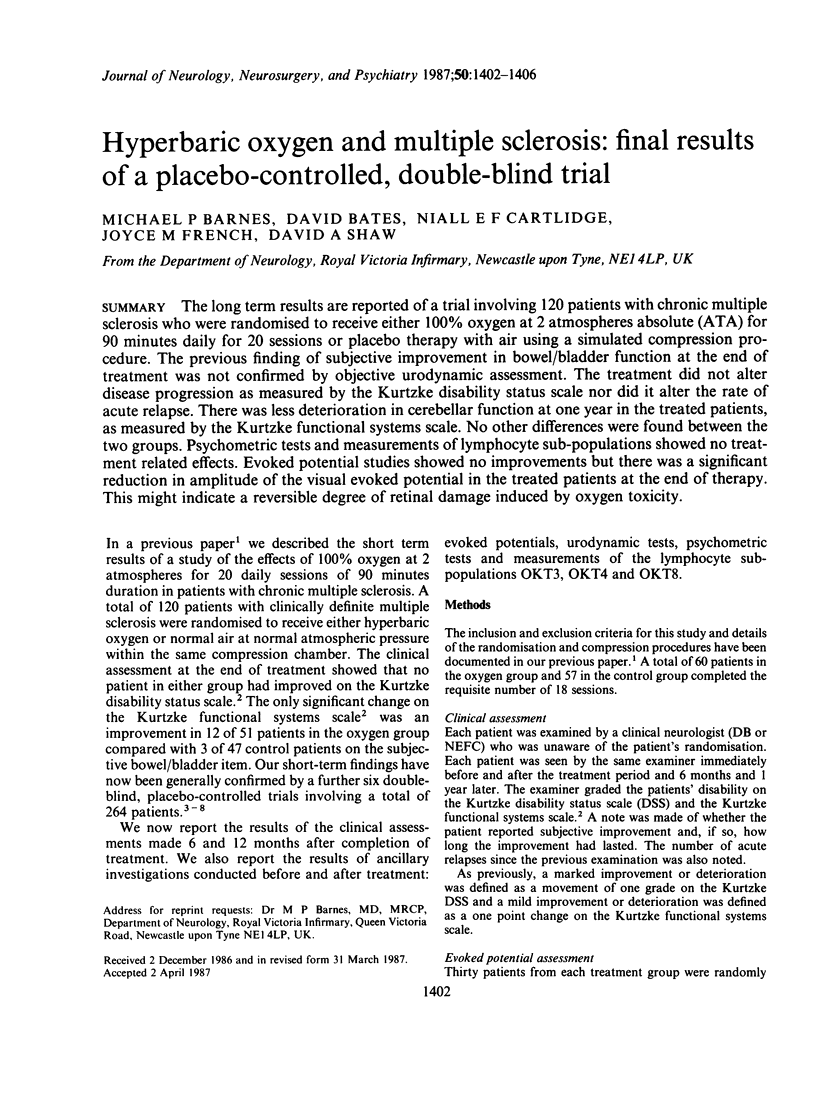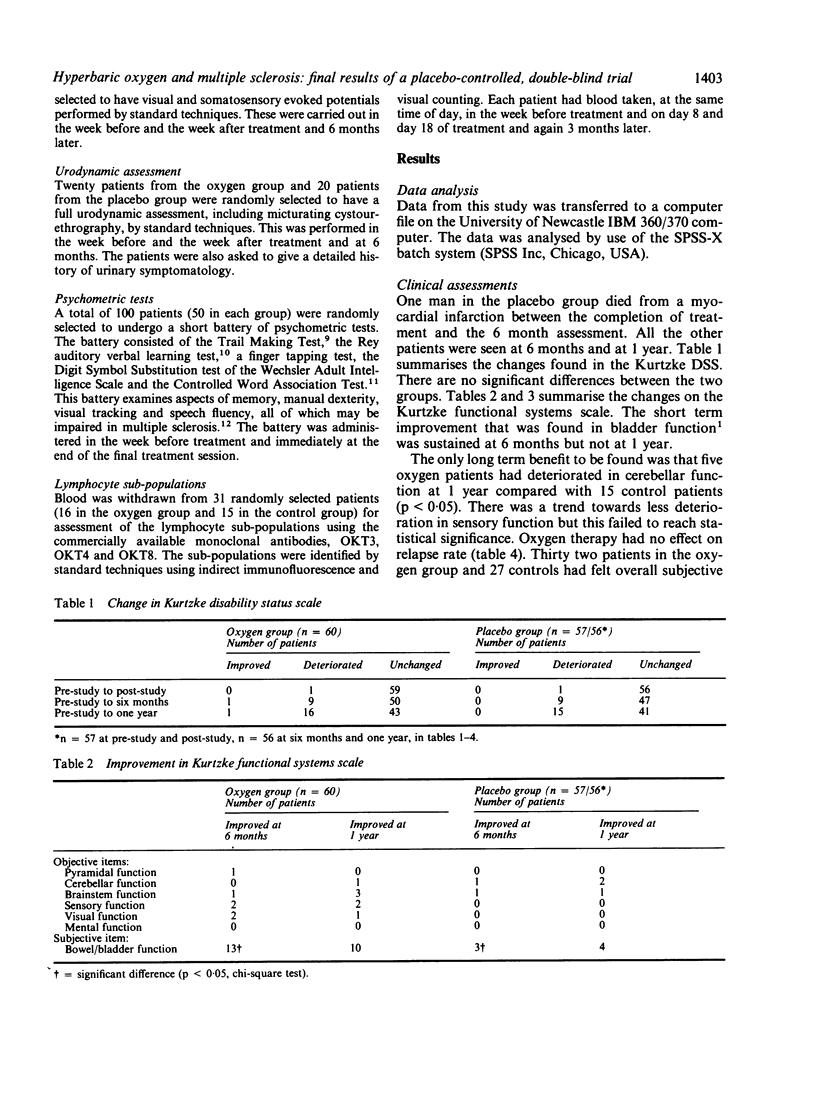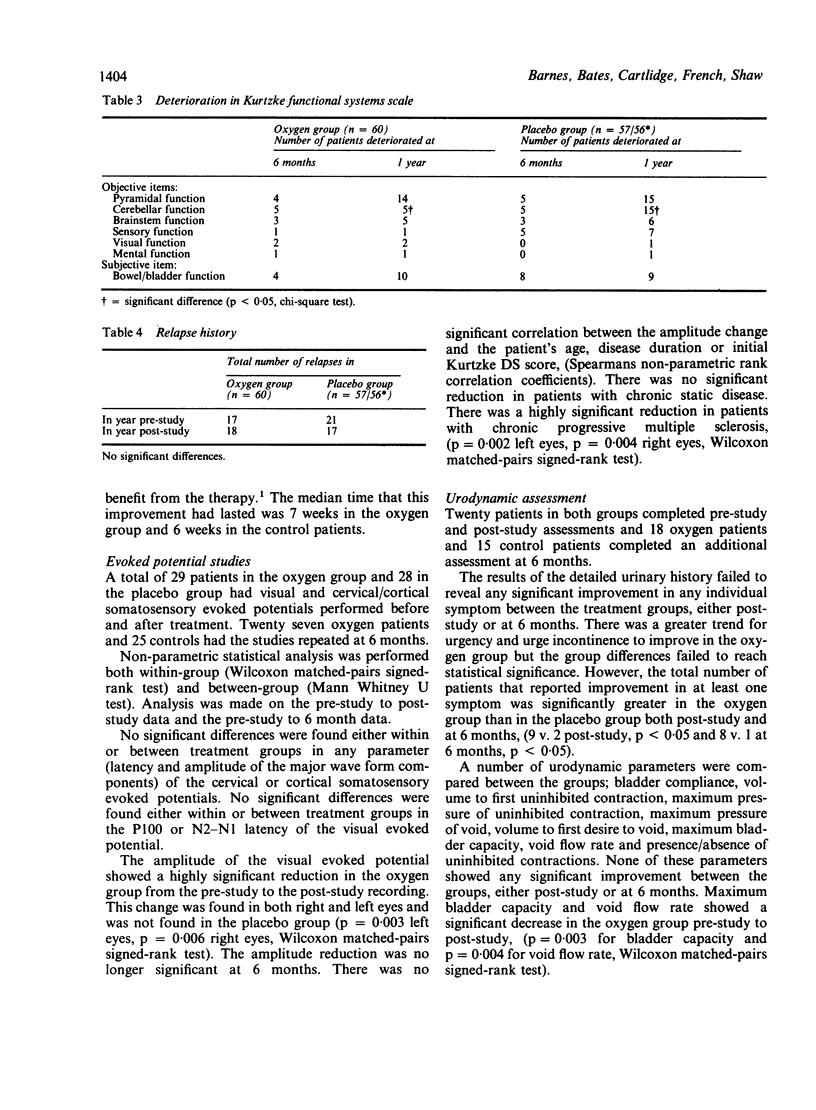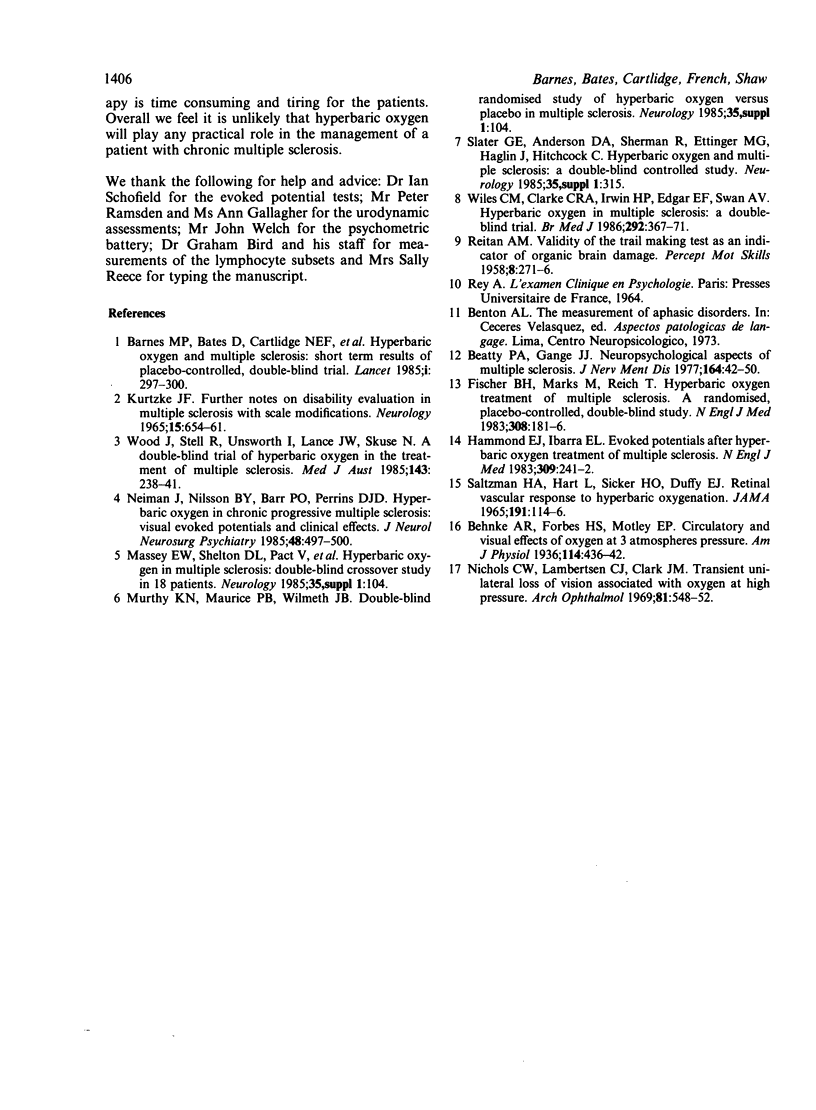Abstract
The long term results are reported of a trial involving 120 patients with chronic multiple sclerosis who were randomised to receive either 100% oxygen at 2 atmospheres absolute (ATA) for 90 minutes daily for 20 sessions or placebo therapy with air using a simulated compression procedure. The previous finding of subjective improvement in bowel/bladder function at the end of treatment was not confirmed by objective urodynamic assessment. The treatment did not alter disease progression as measured by the Kurtzke disability status scale nor did it alter the rate of acute relapse. There was less deterioration in cerebellar function at one year in the treated patients as measured by the Kurtzke functional systems scale. No other differences were found between the two groups. Psychometric tests and measurements of lymphocyte sub-populations showed no treatment related effects. Evoked potential studies showed no improvements but there was a significant reduction in amplitude of the visual evoked potential in the treated patients at the end of therapy. This might indicate a reversible degree of retinal damage induced by oxygen toxicity.
Full text
PDF




Selected References
These references are in PubMed. This may not be the complete list of references from this article.
- Barnes M. P., Bates D., Cartlidge N. E., French J. M., Shaw D. A. Hyperbaric oxygen and multiple sclerosis: short-term results of a placebo-controlled, double-blind trial. Lancet. 1985 Feb 9;1(8424):297–300. doi: 10.1016/s0140-6736(85)91079-7. [DOI] [PubMed] [Google Scholar]
- Beatty P. A., Gange J. J. Neuropsychological aspects of multiple sclerosis. J Nerv Ment Dis. 1977 Jan;164(1):42–50. doi: 10.1097/00005053-197701000-00008. [DOI] [PubMed] [Google Scholar]
- Fischer B. H., Marks M., Reich T. Hyperbaric-oxygen treatment of multiple sclerosis. A randomized, placebo-controlled, double-blind study. N Engl J Med. 1983 Jan 27;308(4):181–186. doi: 10.1056/NEJM198301273080402. [DOI] [PubMed] [Google Scholar]
- Hammond E. J., Ibarra E. L. Evoked potentials after hyperbaric oxygen treatment of multiple sclerosis. N Engl J Med. 1983 Jul 28;309(4):241–242. doi: 10.1056/NEJM198307283090412. [DOI] [PubMed] [Google Scholar]
- KURTZKE J. F. FURTHER NOTES ON DISABILITY EVALUATION IN MULTIPLE SCLEROSIS, WITH SCALE MODIFICATIONS. Neurology. 1965 Jul;15:654–661. doi: 10.1212/wnl.15.7.654. [DOI] [PubMed] [Google Scholar]
- Neiman J., Nilsson B. Y., Barr P. O., Perrins D. J. Hyperbaric oxygen in chronic progressive multiple sclerosis: visual evoked potentials and clinical effects. J Neurol Neurosurg Psychiatry. 1985 Jun;48(6):497–500. doi: 10.1136/jnnp.48.6.497. [DOI] [PMC free article] [PubMed] [Google Scholar]
- Nichols C. W., Lambertsen C. J., Clark J. M. Transient unilateral loss of vision associated with oxygen at high pressure. Arch Ophthalmol. 1969 Apr;81(4):548–552. doi: 10.1001/archopht.1969.00990010550015. [DOI] [PubMed] [Google Scholar]
- QUINBY G. E., DOORNINK G. M. TETRAETHYL PYROPHOSPHATE POISONING FOLLOWING AIRPLANE DUSTING. JAMA. 1965 Jan 4;191:1–6. doi: 10.1001/jama.1965.03080010007001. [DOI] [PubMed] [Google Scholar]
- Wiles C. M., Clarke C. R., Irwin H. P., Edgar E. F., Swan A. V. Hyperbaric oxygen in multiple sclerosis: a double blind trial. Br Med J (Clin Res Ed) 1986 Feb 8;292(6517):367–371. doi: 10.1136/bmj.292.6517.367. [DOI] [PMC free article] [PubMed] [Google Scholar]
- Wood J., Stell R., Unsworth I., Lance J. W., Skuse N. A double-blind trial of hyperbaric oxygen in the treatment of multiple sclerosis. Med J Aust. 1985 Sep 16;143(6):238–240. doi: 10.5694/j.1326-5377.1985.tb122957.x. [DOI] [PubMed] [Google Scholar]


